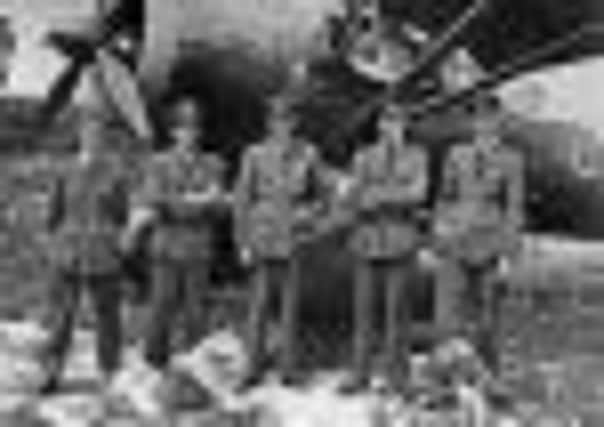DOWN MEMORY LANE: They landed by moonlight


They were landing and taking off from secluded French farmers’ fields in the dead of night, collecting their precious human cargoes and bringing them back to England under the noses of the enemy.
Hugh Verity made 29 successful Lysander pick-ups during his time as commanding officer of No 161 Squadron ‘A’ (Lysander) Flight, and was awarded a double Distinguished Service Order (DSO) and a Distinguished Flying Cross (DFC) for his part in these clandestine operations.
Advertisement
Hide AdAdvertisement
Hide AdOn one sortie, he was south of the river Loire when he encountered impenetrable fog over his landing ground, forcing him to abort the mission.


This was especially unfortunate because he was to land Jean Moulin, the co-ordinator of General de Gaulle’s resistance networks in southern France.
Having decided to return to Tangmere, he found the airfield also blanketed in fog.
Believing his wheels to be just above the runway, Verity cut the throttle; but he was 30 feet too high, and the Lysander smashed into the ground. Miraculously, it did not catch fire.
Published
Advertisement
Hide AdAdvertisement
Hide AdAlways the complete gentleman, Verity apologised profusely in French. Moulin responded in kind, thanking his pilot for ‘a very agreeable flight’.
Hugh Verity retired in 1965 as a Group Captain and in 1978 published a book about these secret operations, We Landed by Moonlight.
James (‘Mac’) McCairns during the summer of 1941 flew Spitfires in Douglas Bader’s Tangmere Wing.
In July 1941, he was shot down and captured but he escaped from prisoner-of-war camp the following year.
Advertisement
Hide AdAdvertisement
Hide AdOn his return, he requested to join No 161 Squadron and in spite of not having the required 1,000 flying hours and 500 hours at night, was accepted as a Lysander pick-up pilot.
His first operation from Tangmere was on the night of November 25/26, 1942 and his last on December 16/17, 1943.
During these 13 months he completed 34 missions, of which 25 were successful.
Nineteen of his operations were double Lysander missions, mostly with Peter Vaughan-Fowler as the other Lysander pilot.
Close-call
Advertisement
Hide AdAdvertisement
Hide AdThe majority of ‘Mac’s’ flights were uneventful, his most dangerous one being his return flight to Tangmere after hitting a poplar tree on final approach to a farmer’s field near Amboise on the night of April 14/15, 1943.
Thinking only an aerial had been torn away, he took off but found he had a serious vibration problem.
However, he managed to fly back to Tangmere and after landing found that the spinner, the centre boss of the propeller, was badly dented on one side and the tailplane was attached by only one bracket held on by a single screw.
During his tour with 161’s Lysander flight, ‘Mac’ was awarded three DFCs.
Advertisement
Hide AdAdvertisement
Hide AdPeter Vaughan-Fowler, aged only 19 years, was selected for Special Duties training even though he had no night flying experience!
His first successful operation was on the night of October 26/27, 1942 when he dropped two passengers (‘Joes’) off in a field near Mâcon and brought two back to Tangmere.
This operation was the first of 21 successful operations out of 27 attempted from Tangmere between October 1942 and September of the following year. On September 12/13, 1943, with Hugh Verity and ‘Mac’ McCairns, Vaughan-Fowler carried out a triple Lysander operation that carried eight passengers out and eight back – the three Lysanders only spent only nine minutes on the ground!
For his highly-successful tour with No 161 Squadron, Peter Vaughan-Fowler was awarded the DFC and Bar.